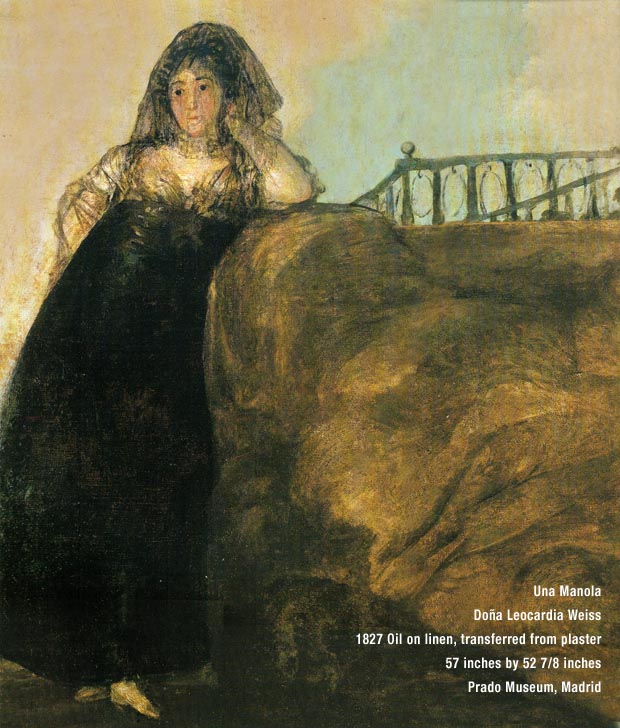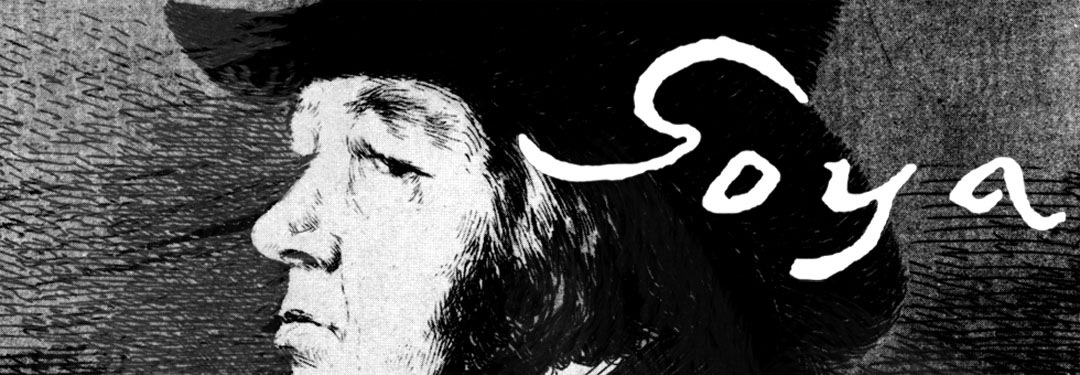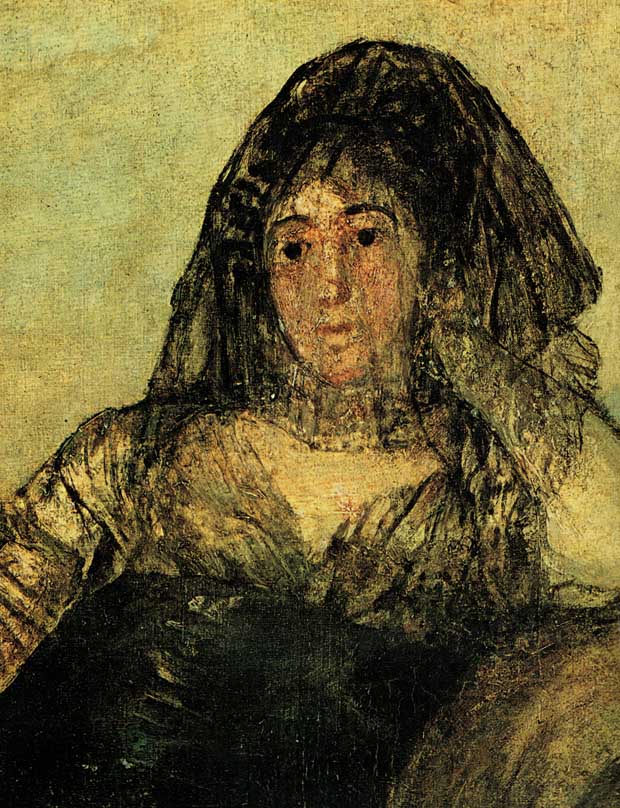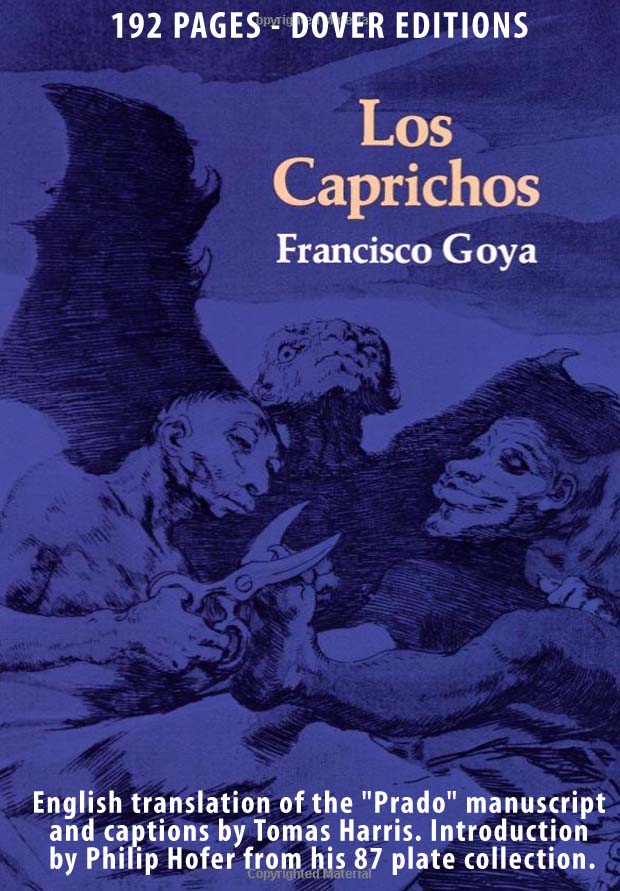The Black Paintings - La Leocadia

The Black Paintings
La Leocadia
also called
Una Manola
Doña Leocardia Weiss
1827 Oil on linen, transferred from plaster
57 inches by 52 7/8 inches
Prado Museum, Madrid
Leocadia (sometimes spelled Leocardia) Weiss lived with Goya the last years of his life. She was hired as a housekeeper, and brought into the household her daughter Rosario. Goya taught Rosario painting and drawing skills, and she later had a career as a painter in France and Spain. Goya's will instructed that at his death she was to be treated as a "natural child." This has led to speculation that Goya fathered Rosario as he had known Leocadio for several years prior to hiring her. However, many Goya biographers say that the datings for paternity do not match up, that it is more likely that Leocadia's husband, whom she had divorced years earlier, was Rosario's biological parent.
This painting of Leocadia is one of the fourteen "Black Paintings" executed by Goya upon the walls of his house in Madrid. X-ray investigations of the image show that originally the figure leaned upon a fireplace mantle, and that she was not dressed in mourning clothing, as shown here.
The usual speculation is that Goya himself added the funeral aspects later, when mood, or old age, had moved him to give a different message to the image. It is also suggested that some other hand added the mourning aspects after Goya's death - - perhaps Rosario? But it seems unlikely she would have had entrance to Goya's former home, which had been given to Goya's grandson Mariano, since Goya's son Xavier and Rosario's mother Leocadia did not have a friendly relationship following Goya's death in Bourdeaux.
Special section on The Black Paintings
Link: Museo del Prado page on Leocadia Weiss painting
Goya's the "Black Paintings"
La Quinta de Goya – Goya's home in Spain and location where he made the Black Paintings
Writings about the Black Paintings
De Salas on the Black Paintings
AMAZON
Goya The Terrible Sublime - Graphic Novel - (Spanish Edition) - Amazon
"From this headlong seizure of life we should not expect a calm and refined art, nor a reflective one. Yet Goya was more than a Nietzschean egoist riding roughshod over the world to assert his supermanhood. He was receptive to all shades of feeling, and it was his extreme sensitivity as well as his muscular temerity that actuated his assaults on the outrageous society of Spain." From Thomas Craven's essay on Goya from MEN OF ART (1931).
"...Loneliness has its limits, for Goya was not a prophet but a painter. If he had not been a painter his attitude to life would have found expression only in preaching or suicide." From Andre Malroux's essay in SATURN: AN ESSAY ON GOYA (1957).
"Goya is always a great artist, often a frightening one...light and shade play upon atrocious horrors." From Charles Baudelaire's essay on Goya from CURIOSITES ESTRANGERS (1842).
"[An] extraordinary mingling of hatred and compassion, despair and sardonic humour, realism and fantasy." From the foreword by Aldous Huxley to THE COMPLETE ETCHINGS OF GOYA (1962).
"His analysis in paint, chalk and ink of mass disaster and human frailty pointed to someone obsessed with the chaos of existence..." From the book on Goya by Sarah Symmons (1998).
"I cannot forgive you for admiring Goya...I find nothing in the least pleasing about his paintings or his etchings..." From a letter to (spanish) Duchess Colonna from the French writer Prosper Merimee (1869).
GOYA : Los Caprichos - Dover Edition - Amazon





